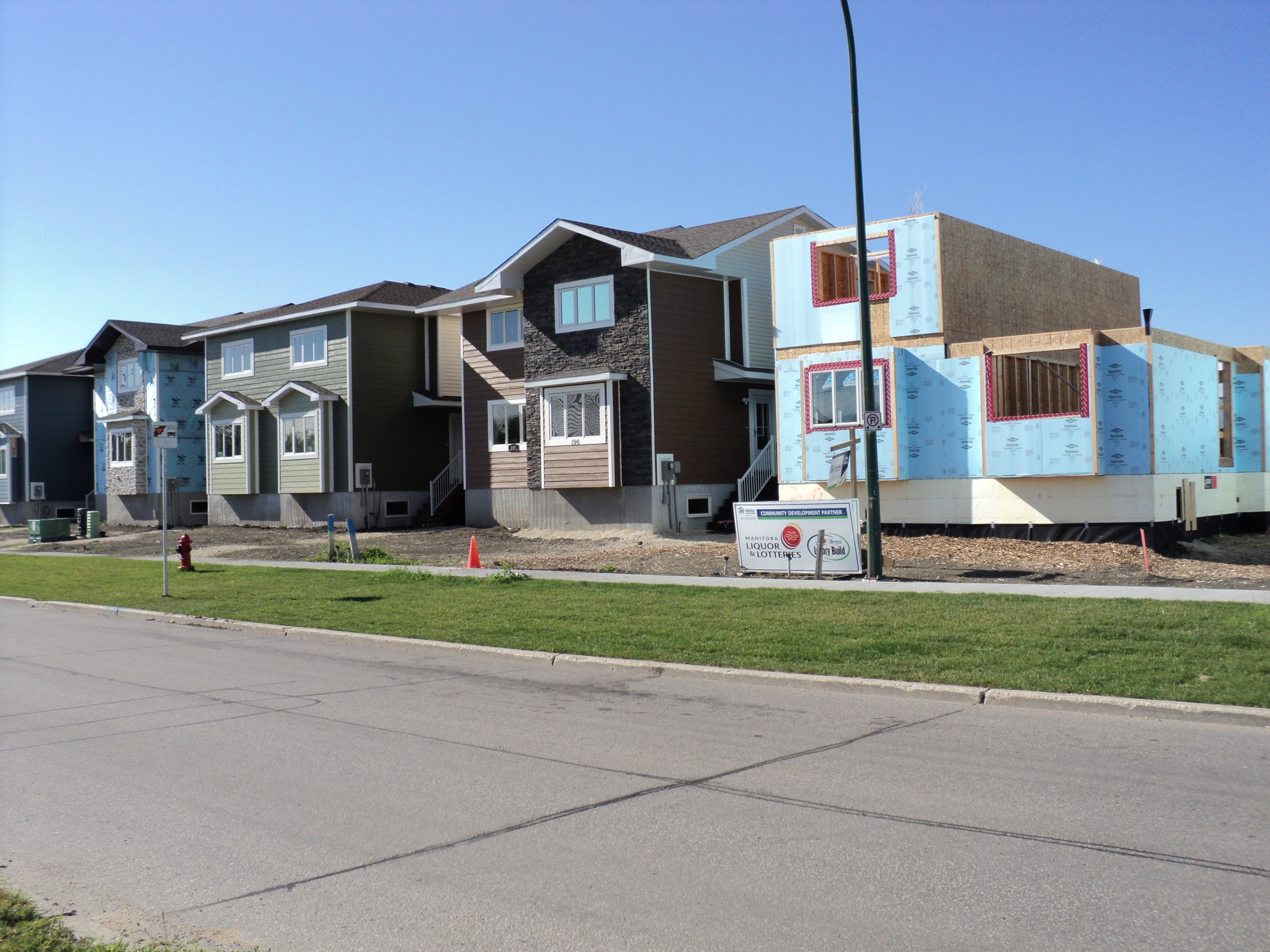The Habitat for Humanity development in Winnipeg’s Riverbend neighbourhood is nearing completion. Of a proposed 10 side-by-side units, half have been completed and half are almost done. As a resident of the area, I feel that now is a good time to take another look at the issues surrounding the project.
Habitat for Humanity is an international charity dedicated to building high quality but affordable housing for low-income families. The families, who are vetted to establish financial stability and legitimate need, have to put in a certain number of hours of “sweat equity.” This usually means helping to build the house alongside volunteers, both to develop home maintenance skills and to encourage a sense of pride in their creation. In return for this, the family gets an interest-free mortgage.
Habitat is a wonderful organization that builds communities and helps prepare hardworking low-income families for home ownership. Unfortunately, when the organization announced that it was planning a development for the corner of Fernbank and Main in the far north part of the city, a group of concerned citizens lost their collective shit.
At the Oct. 11, 2011, meeting of the city’s Lord Selkirk-West Kildonan Community Committee, area residents spoke out in favour of and against the development. The issues brought up by opponents of the development were rather petty – concerns about things like visitor parking, increased traffic, and housing density. All of these were shown by Habitat for Humanity Winnipeg CEO Sandy Hopkins to be unfounded.
It’s hard to escape the conclusion that these complaints are a fig leaf. Though everything said at the meeting was veiled by politeness, the project’s opponents were happy to make their real opinions known in other venues. Hopkins read from an email he had received regarding the development: “We know what will eventually go into those places: more crimes, more drugs, drinking parties, and probably pimping too.”
The politely stated “concerns” about the Habitat for Humanity development are barely disguised race and class rage. People are concerned about property values. No one is ever concerned about property values unless the plebes are invading their Tolkienian paradise.
The project will probably be a positive thing for Riverbend. It will bring good people into the area, develop the infrastructure at the crucial Fernbank-Main intersection, and replace the parcel of fallow marshy land that once greeted visitors to the neighbourhood with beautiful well-built homes that testify to a strong sense of community fellowship.
Riverbend has always been one of those neighbourhoods that is hermetically sealed against the rest of the city. No major roads pass through the area. One of its longstanding problems is the lack of a good connecting road to the nearby Garden City area, which means that you have to drive a considerable distance to get anywhere.
The area’s houses are overpriced middle class suburban family homes. Most of what they’re paying for is the great suburban illusion, the trade-off of cultural vitality in exchange for a narrowly conceived peace and quiet. Who cares if there’s nothing to do in the area? Everyone who matters has a car and infinite money for gas, right?
As the area is developed, especially in ways that bring much-needed diversity to the community, the illusion gradually dissolves. This can be frightening for those who were heavily invested in it, but the suburban illusion is not good for the soul. It makes suburban kids grow up to be small-minded, myopic, and afraid of the world beyond their immaculately groomed front streets. The Habitat for Humanity project on Fernbank is one more heartening step toward Riverbend gaining its rightful status as a real neighbourhood. I can think of few things better for the area or the people who live there. God speed the plow.


I like that it is adding a diverse crowd to an area that is just as class-centric as Charles Wood, but I don’t think that it is going to be any good for the area, and for the residence and you touch on the reasons right in the piece. “Who cares if there’s nothing to do in the area? Everyone who matters has a car and infinite money for gas, right?”
Studies have shown that living in the suburbs is not easy for low income families because they have to spend large sums of money on transportation. Even if the family only spends 25-30% of the family income on their mortgage (which is what they are supposed to pay, but more than likely it would be 35+%) they will still need to spend a large portion on their cars because of the lack of walkable infrastructure, bike paths and transit options.